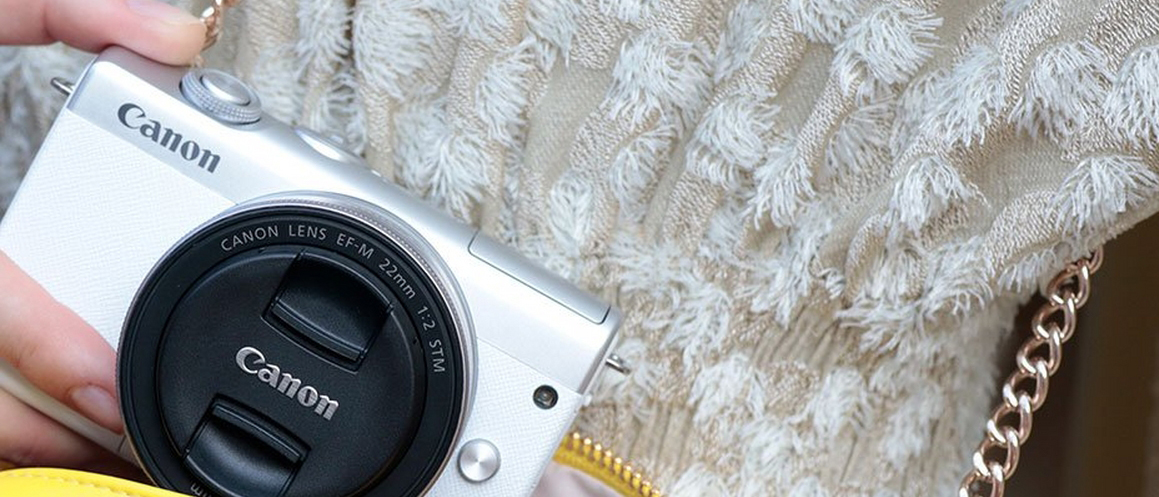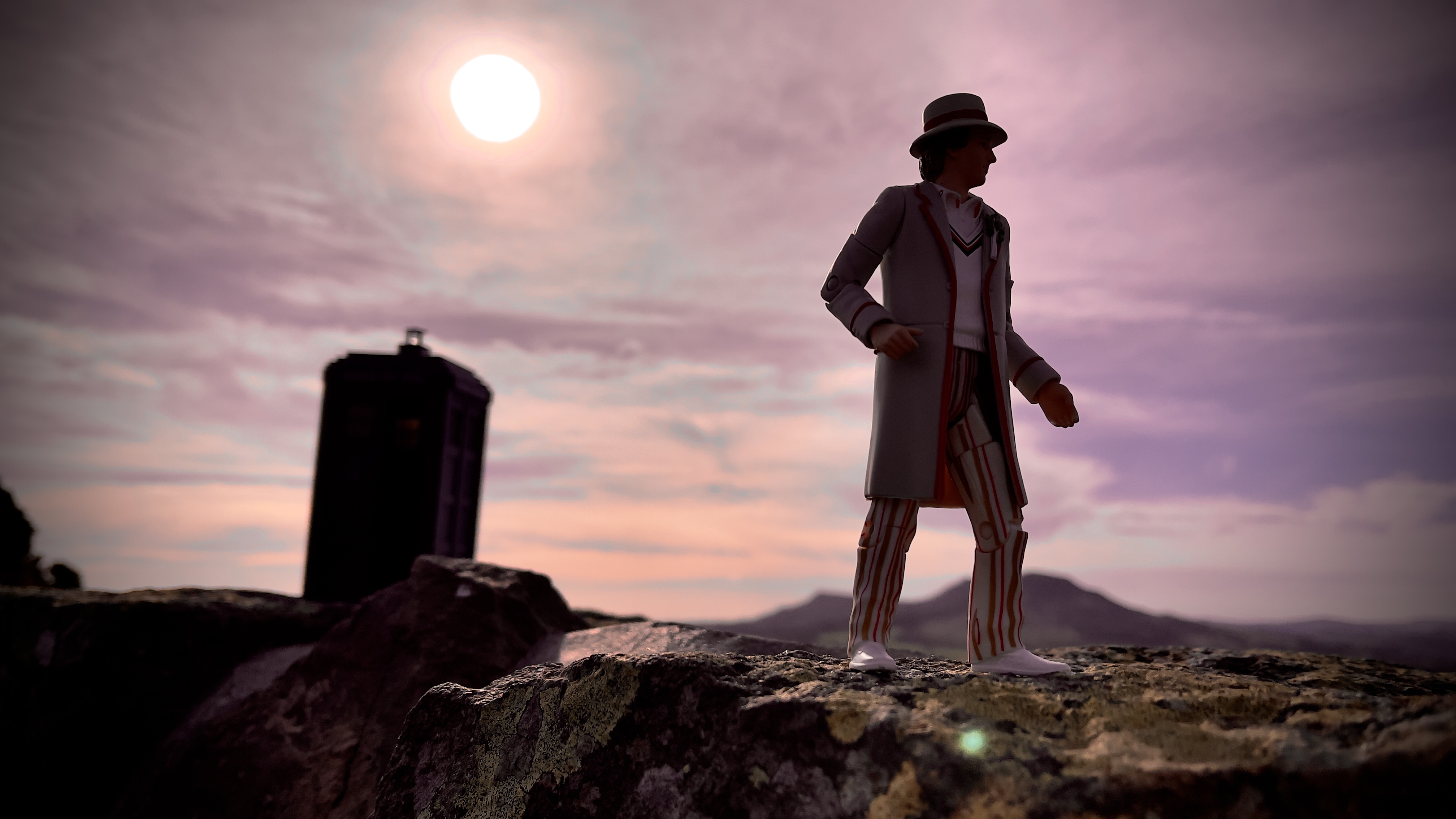Digital Camera World Verdict
The Canon EOS M200 launches into a tough market and, while it’s a decent camera with some great easy-to-use features for beginners, it doesn’t really excite or produce compelling images.
Pros
- +
Compact
- +
Affordable
- +
Shoots 4K video
Cons
- -
4K video is cropped
- -
4K limited to contrast AF
- -
No microphone input
Why you can trust Digital Camera World
The Canon EOS M200 is the company's smallest, most affordable mirrorless camera. As such it doesn’t have a very extensive set of features, but the fact that it has a 24.1MP APS-C Dual Pixel CMOS sensor (to enable phase detection autofocusing), plus Canon’s latest Digic 8 processing engine and the ability to record 4K video makes it an attractive proposition.
It’s also designed to be easy to use, which makes it a good choice for beginners, but it could be a nice choice for more experienced photographers who want a small camera that they can take anywhere.
Update: It's been a couple of years since the EOS M200 was introduced, and even back then it wasn't exactly state of the art, so is it still competitive in 2021? To be fair, there aren't many cheap APS-C beginner cameras for it to compete against.
Specifications
Megapixels (effective): 24.1
Max resolution: 6,000 x 4,000
Sensor information: APS-C format (22.3 x 14.9mm) CMOS
Shutter speed: 30-1/4000 sec, Bulb
ISO sensitivity stills: ISO100-25600 ((expandable to ISO 51.200)
ISO sensitivity video: 4K Movie ISO100-6400, 1080p ISO100-12800 (expandable to 25600)
Exposure modes: Program, Shutter priority, Aperture priority, Manual exposure, Scene Intelligent Auto, Hybrid Auto, Creative Assist, SCN, Creative Filters, Movie
Metering options: Evaluative, Partial, Center weighted average, spot
Flash modes: Auto with flash exposure compensation to +/-2Ev
Connectivity: Wi-Fi, Bluetooth, HDMI (Micro – Type-D, USB (Micro USB)
Weight: 299g with battery and SD card
Dimensions: 108.2 x 67.1 x 35.1mm
Battery: Rechargeable Li-ion LP-E12
Storage: SD/SDHC/SDXC UHS-I
LCD: Tilting 3-inch 1,040,000-dot Touchscreen LCD
Viewfinder: N/A
Key features
Canon has kept the sensitivity range of the M200 the same as the M100 that it replaces, which is ISO100-25600 (expandable to ISO51,200) for stills. We’d aim to limit the stills setting to ISO6,400 although the results at ISO12,800 are useable. Pushing beyond that results in JPGs that look too smooth in places, while the raw files are noisy.
Despite having almost exactly the same pixel count and an updated processing engine, the Canon EOS M200 also has the same maximum continuous shooting rate as the M100. However, at 4fps with continuous autofocusing and 6.1fps in single AF mode, that’s reasonable for an entry level camera.
Canon’s Dual Pixel CMOS AF system is one of the most capable when it comes to shooting video or stills in Live View mode on a DSLR, and it gives good service in the M200 with up to 143 autofocus (AF) points (the exact number depends upon the lens in use). That’s up from 49 with the M100.
The best camera deals, reviews, product advice, and unmissable photography news, direct to your inbox!
• The best EF-M lenses for your EOS M200
Unusually, there’s no AI servo made that can switch automatically between One Shot (single AF) and AI Servo (continuous AF) mode when subject movement is detected. That’s not a huge drama for enthusiast photographers, but it means that beginners need to learn which option to use with their subject.
The M200 enables individual AF points to be selected, or there’s Zone AF mode that gives the camera a bit more control. In addition, there’s Face + Tracking and Eye Detection AF, which are especially useful with moving subjects and portraits.
We found that the autofocus system works very well, even in dim conditions, but the performance isn’t quite so assured in 4K video mode when the focusing switches from phase detect to contrast-based detection.
This is a serious limitation. It means the video mode you're most likely to want to use lacks the benefit of Canon's Dual Pixel CMOS autofocus.
That's not all. In addition to the change in the AF method that’s used for 4K video, the M200 applies a 1.6x crop to the field of view during 4K recording. As a result, the 15-45mm kit lens – which normally has an effective focal length of 24-72mm – looks longer at around 38-115mm in 4K mode.
This autofocus limitation doesn't apply to FHD video or stills, and when recording 1080p video or shooting still images, the Face Tracking is very good even in low light – and the Eye Detection AF is able to cope with subjects wearing spectacles.
That may not be a problem in some shooting scenarios, but it means tight framing around your face if you vlog with the camera at arm’s length. This may make 1080p a more attractive setting for vlogging – but as there’s no microphone port, you’re reliant on the in-built mic.
While the M200 scores well for ease of use, its build feels a bit cheap. It’s made from polycarbonate and it has a lightweight plastic feel.
A switch around the power button on the top of the camera enables you to select between Scene Intelligent Auto (Auto+), Stills and Video shooting mode. When Stills mode is selected, you can swap quickly between modes such as program, aperture priority, shutter priority and manual, as well as a host of automatic shooting options by tapping on the exposure mode icon in the top-left of the touchscreen.
This 3-inch 1,040,000-dot screen is very responsive, and it’s easy to make setting selections and adjustments. Helpfully, the main and Quick menus are both compatible with touch control. Images must be composed on the screen, as there’s no viewfinder built-in, and reflections can be problematic in bright sunny conditions. There’s also no electronic level, which can make it difficult to get the horizon straight.
With the odd exception, the Canon EOS M200’s evaluative metering mode does a good job of getting the exposure of the main subject right. However, there are times when you may want to dial in a little negative exposure compensation to darken the brighter areas. If you need to, the shadows of underexposed areas can be brightened by around 3EV or so to get things looking right – but keep an eye on the out-of-focus areas.
Detail levels are good, but not stellar. We noticed that the out-of-focus details in some ISO400 JPG files can look rather mushy under close scrutiny. They look fine at around A4 size, but you need to be aware of this issue if you plan on making large prints or crops.
Verdict
The Canon EOS M200 launches into a tough market and, while it’s a decent camera with some great easy-to-use features for beginners, it doesn’t really excite or produce compelling images. It does shoot 4K video, but its autofocus limitations and heavy 1.6x crop factor make the 4K option a lot less appealing than it sounds.
Fortunately for Canon, there isn't a great deal of competition in the beginner camera market right now, so against similarly priced rivals, the EOS M200 stacks up fairly well. However, you can get a much better camera if you spend just a little more money, such as the Panasonic Lumix G100, Olympus OM-D E-M10 Mark IV, or Canon's own EOS M50 Mark II.
Read more:
The best EF-M lenses in 2020
How many Canon EF-M lenses are there? We count 31…
The best Canon camera in 2019: from DSLR to mirrorless to PowerShot and Ixus
The 10 cheapest mirrorless cameras in 2019: great bargains for careful shoppers!
Angela has been testing camera gear from all the major manufacturers since January 2004 and has been Amateur Photographer’s Technical Editor and Head of Testing for Future Publishing’s photography portfolio (Digital Camera Magazine, PhotoPlus: The Canon Magazine, N-Photo, Practical Photoshop, Photography Week and Professional Photography magazines, as well as the Digital Camera World and TechRadar websites). She is the founder of SheClicks - a community group that encourages and supports female photographers.








